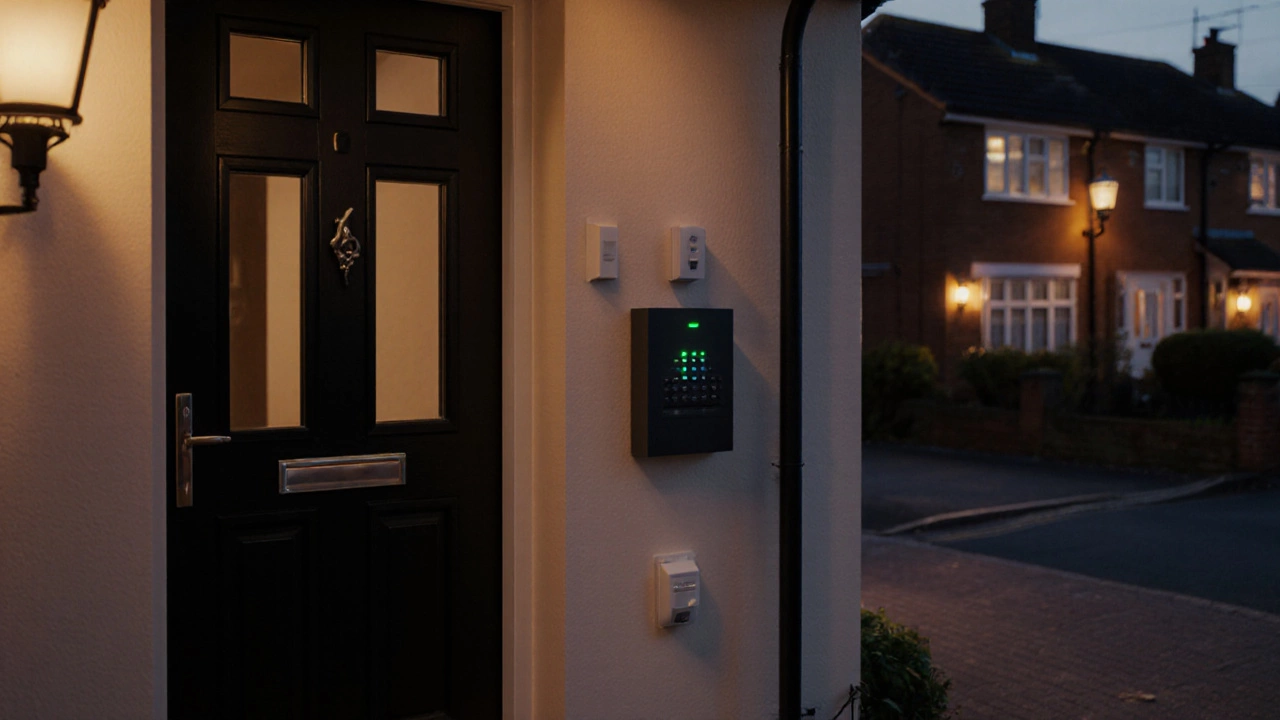Home Alarm System Cost Calculator
Cost Inputs
Cost Breakdown
When you hear the term Burglar Alarm System is a technology that detects unauthorized entry and triggers an alert or response, you probably picture flashing lights, a loud siren, and the peace of mind that comes with protection. But every security solution carries trade‑offs, and a home alarm isn’t an exception. Below we unpack the most common drawbacks, how they show up in real life, and what you can do to keep the downsides from turning your safety net into a headache.
1. False Alarms Drain Time and Money
Nothing irritates neighbours or emergency services more than a false call. A sensor triggered by a passing cat, a blown fuse, or a lingering thunderstorm can summon police, fire or a monitoring centre, costing you time and potentially a fine.
- According to a 2023 Australian Home Security Survey, 27% of respondents reported at least one false alarm in the past year.
- Many local councils impose penalties of up to $200 per false alarm after the third incident.
- Frequent false alarms may lead a monitoring service to downgrade your response level.
Mitigation steps include regular sensor testing, adjusting motion‑detector sensitivity, and opting for a system that distinguishes between human movement and pets.
2. High Installation and Ongoing Costs
While a basic DIY kit can start around $150, a professionally installed, fully integrated system often tops $2,000 in hardware plus a monthly monitoring fee of $30‑$50.
- Installation charges in Adelaide typically range from $300 to $800, depending on wiring complexity.
- Contractual monitoring fees may increase after the first year, especially if you add cameras or smart locks.
- Some insurers offer discounts, but the savings often offset only a fraction of the total expense.
We recommend getting at least three quotes and asking providers to itemise every charge - hidden fees pop up more often than you’d expect.
3. Power and Battery Dependency
Most alarm panels run on mains electricity with a backup battery that typically lasts 12‑24 hours. Power outages or a dead battery can render the system useless.
- Cold winters in South Australia can shave battery life by up to 30%.
- Some newer models incorporate solar‑rechargeable batteries, but they still need regular sunlight exposure.
- Neglecting battery checks can lead to a silent failure that only shows up during an actual break‑in.
Set a calendar reminder to test the backup power every quarter, and consider a UPS (uninterruptible power supply) for critical control panels.
4. Ongoing Maintenance and Service Issues
System Maintenance is the routine care required to keep alarm components functional, such as sensor cleaning, firmware updates, and battery replacement. Neglect can cause delayed alerts or missed triggers.
- Dust accumulation on door/window contacts reduces conductivity, leading to false readings.
- Firmware bugs occasionally disable motion sensors until the provider pushes a patch.
- Professional servicing contracts often cost $120‑$200 per visit, adding to the total cost of ownership.
DIY owners can clean contacts with a cotton swab and mild alcohol, while always checking the provider’s website for firmware notes.

5. Signal Interference and Jamming
Wireless alarm components rely on radio frequencies (often 2.4GHz or 915MHz). Nearby routers, baby monitors, or even a mischievous neighbor with a jammer can disrupt communication.
- In 2022, a case in Melbourne showed a burglar using a cheap RF jammer to silence a wireless panel for 45 minutes.
- Signal strength can drop dramatically behind thick concrete walls, causing sensors to fall offline.
- Some systems include a “tamper” alert that notifies you when the panel loses connection for more than 5 minutes.
Choosing a hybrid wired‑wireless system and placing repeaters strategically reduces the risk.
6. Privacy and Data Concerns
Privacy Concerns are the worries that alarm data, especially video or sensor logs, could be accessed by unauthorized parties or misused by service providers. Cloud‑based monitoring stores event logs on remote servers, which can be a target for hackers.
- Australian privacy law (Privacy Act 1988) requires providers to protect personal information, but breaches still occur.
- End‑to‑end encryption is now standard, but older models may transmit data in plain text.
- Some monitoring services sell aggregated alarm data to insurers for risk modelling.
If privacy matters, look for systems with local storage options and verify that the provider follows ISO/IEC 27001 security standards.
7. Hardware Failures and False Negatives
All electronics can fail. A faulty motion detector, a corroded door contact, or a dead speaker can leave a gap in coverage.
- Manufacturers typically offer a 2‑year warranty, but replacement parts can cost $50‑$150 per sensor.
- False negatives - when a real intrusion goes unreported - are rarer but far more dangerous.
- Regular self‑tests (pressing the panic button, tripping a sensor) help verify the chain of alerts.
Consider a system that sends a secondary alert (e.g., SMS) in addition to the primary phone call, adding redundancy.
8. User Error and Complexity
User Error is mistakes made by homeowners when arming, disarming, or configuring the alarm, often leading to missed alerts or accidental triggers. Complex keypad codes, multiple user codes, and app interfaces can confuse anyone.
- Older adults may forget numeric codes, causing lock‑outs and delayed response.
- Kids playing with the keypad can unintentionally set off the alarm.
- Mobile app glitches sometimes display an armed status when the system is actually disarmed.
Training all household members, using biometric or RFID tags where possible, and keeping a printed cheat‑sheet near the entryway can reduce mishaps.
Quick Comparison of Key Disadvantages
| Disadvantage | Typical Impact | Mitigation Strategy |
|---|---|---|
| False Alarms | Neighbour complaints, fines, wasted emergency resources | Adjust sensor sensitivity, regular testing, pet‑friendly zones |
| High Cost | Up‑front expense, recurring fees | Shop multiple quotes, consider DIY kits, leverage insurance discounts |
| Power Dependency | System dead during outages | Quarterly battery checks, UPS backup |
| Maintenance Needs | Component wear, firmware bugs | Scheduled cleaning, firmware updates, service contracts |
| Signal Jamming | Lost alerts | Hybrid wired‑wireless, repeaters, tamper alerts |
| Privacy Risks | Data breaches, unwanted sharing | End‑to‑end encryption, local storage, reputable provider |
| Hardware Failure | Uncovered entry points | Regular self‑tests, warranty coverage, redundant alerts |
| User Error | Accidental disarm, missed alerts | Simple user codes, biometric tags, training |
Frequently Asked Questions
What triggers a false alarm most often?
Pet movement, low‑battery warnings, and environmental factors like wind or heavy rain are the top three causes in residential settings.
Can I avoid monthly monitoring fees?
Yes, many DIY systems let you receive alerts straight to your phone via the app, eliminating the need for a third‑party monitoring service.
How often should I replace alarm batteries?
Check them at least every three months; most manufacturers recommend a full replacement every 12‑18 months for optimal reliability.
Is a wireless alarm more vulnerable to jamming?
Wireless signals can be interfered with, but modern systems use frequency‑hopping and encrypted channels to make jamming difficult. Adding a wired backbone for critical zones improves resilience.
Do alarm systems store personal data?
Cloud‑based services log timestamps, sensor states, and sometimes video clips. Choose a provider that offers local storage options and complies with the Australian Privacy Act.
Understanding the downsides of an alarm system helps you weigh the peace of mind against the practical realities. By planning for false alarms, budgeting for maintenance, and choosing a provider that respects privacy, you can enjoy security without the surprise headaches.

